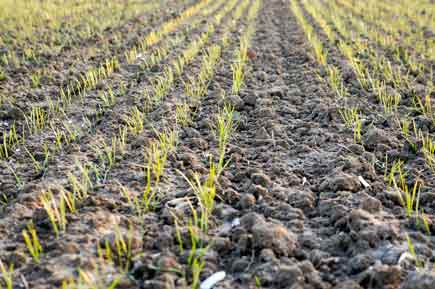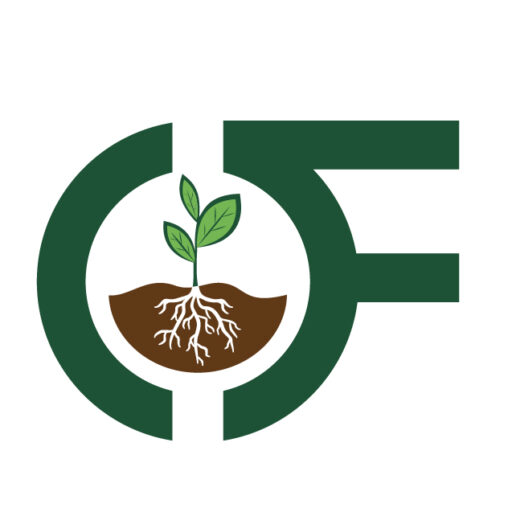The Role of Hay in Sustainable Farming and Soil Health
Sustainable farming practices are gaining increasing recognition as the world grapples with the need to produce food while preserving our environment and natural resources. One often-overlooked but crucial component of sustainable farming is the use of hay. Hay, primarily used as livestock feed, plays a multifaceted role in sustainable agriculture, from soil health improvement to carbon sequestration. We will delve into the various ways hay contributes to sustainable farming methods and enhances soil health.

(First straws on the acre.)
1. Soil Erosion Prevention
Soil erosion is a significant concern in modern agriculture, as it can lead to the loss of fertile topsoil and result in reduced crop yields. Hay production, particularly in the form of grasslands and meadows, acts as a protective cover for the soil. The dense network of grass and plant roots in hayfields binds soil particles together, reducing the risk of erosion caused by wind and water. Hay like alfalfa has been known to improve soil structure and also maintain sustainable farming with all the positives that alfalfa provides.
By anchoring the soil, hayfields serve as a natural erosion barrier, preventing valuable topsoil from being washed away during heavy rains or blown away by strong winds. This erosion prevention not only preserves the soil’s fertility but also helps maintain the health of nearby water bodies by reducing sediment runoff.
2. Nutrient Cycling
In sustainable farming, efficient nutrient cycling is crucial to maintaining soil fertility and reducing the need for synthetic fertilizers. One of the benefits of sustainable farming with hay is that hay plays a pivotal role in nutrient cycling by facilitating the return of essential nutrients to the soil. After hay is harvested and consumed by livestock, their manure becomes a valuable source of organic matter and nutrients when applied back to the fields.
The decomposition of manure adds organic carbon, nitrogen, phosphorus, and potassium to the soil. These nutrients are essential for plant growth and play a fundamental role in crop productivity. By integrating hay production and livestock farming, farmers can create a closed-loop system where hay helps recycle nutrients, reducing the reliance on external inputs.
3. Carbon Sequestration
The issue of climate change has brought carbon sequestration into the spotlight, and hayfields have a role to play in this context as well. The process of photosynthesis, through which plants convert carbon dioxide from the atmosphere into organic carbon compounds, helps sequester carbon in the soil. Grasses and legumes, commonly used in hay production, are prolific carbon fixers.
As these plants grow and photosynthesize, they absorb carbon dioxide and store carbon in their roots and the soil. The carbon-rich organic matter that accumulates in the soil improves its structure, water-holding capacity, and fertility. Well-managed hayfields can thus contribute to carbon sequestration efforts and help mitigate climate change.
4. Biodiversity Support
Hayfields, when managed sustainably, can provide habitat and forage for a diverse range of plant and animal species. The variety of plant species typically found in hayfields, including grasses, legumes, and wildflowers, attracts pollinators such as bees and butterflies. These pollinators play a crucial role in supporting the reproduction of flowering plants, including many crop species.
Furthermore, hayfields can serve as nesting and foraging grounds for various bird species, including ground-nesting birds like meadowlarks and bobolinks. Maintaining a mosaic of different plant species and allowing some areas of the hayfield to grow tall and wild can enhance biodiversity and support wildlife conservation efforts on farms.
5. Soil Health Enhancement
The health of agricultural soils is a central concern for sustainable farming practices. Healthy soil is characterized by good structure, high organic matter content, and a balanced ecosystem of beneficial microorganisms. Hay production can significantly contribute to improving and maintaining soil health through several mechanisms:
- Organic Matter Addition: As hay decomposes, it adds organic matter to the soil, improving its structure and water-holding capacity. Increased organic matter content also supports a diverse community of beneficial soil microorganisms.
- Microbial Diversity: The extensive root systems of hay plants foster a rich microbial community in the soil. These microorganisms play a vital role in nutrient cycling, disease suppression, and overall soil health.
- Reduced Soil Compaction: Hayfields are less likely to experience heavy machinery traffic compared to crop fields. This reduces soil compaction, which can impede root growth and water infiltration. Healthy, uncompacted soils provide better growing conditions for crops.
6. Crop Rotation and Weed Suppression
In sustainable farming, crop rotation is a common practice used to break pest and disease cycles and maintain soil health. Hay production fits well into crop rotation schemes, providing a valuable alternative to cash crops like corn or soybeans.
Additionally, the dense growth of hay crops can help suppress weed growth. The competition for resources such as sunlight and nutrients can reduce the prevalence of weeds in fields that have been in hay production. This can reduce the need for herbicides and contribute to a more sustainable and environmentally friendly farming approach.
7. Water Management
Effective water management is essential for both crop production and environmental conservation. Hayfields, with their deep root systems, play a role in water management by:
- Enhancing Infiltration: The dense roots of hay plants create channels in the soil, enhancing water infiltration. This reduces surface runoff and erosion while allowing water to penetrate deeper into the soil, replenishing groundwater reserves.
- Reducing Flooding Risk: By absorbing excess rainfall, hayfields can reduce the risk of local flooding. This is particularly valuable in regions prone to heavy rains and flash floods.
- Improving Water Quality: Hayfields act as natural filters, trapping sediments and pollutants from runoff water. This helps improve water quality in nearby streams and rivers.
Conventional farming vs sustainable farming
Conventional farming and sustainable farming represent contrasting approaches to hay production, each with its unique set of practices and impacts. Conventional farming often prioritizes high yields and efficiency, relying heavily on chemical fertilizers and pesticides to boost production. This method typically involves monoculture, where only one type of crop, in this case, hay, is grown extensively, which can lead to soil depletion and increased vulnerability to pests and diseases. Conversely, sustainable farming emphasizes environmental health and long-term soil fertility. Making sure to cover crops for sustainable farming will ensure a more controlled storage and handling while keeping hay dry. In sustainable hay cultivation, farmers may use organic fertilizers, rotate crops to maintain soil health, and employ integrated pest management strategies that reduce chemical use. This approach not only supports biodiversity but also aims to maintain ecological balance, ensuring that hay production remains viable for future generations. Sustainable farming, while potentially less yield-intensive in the short term, offers a holistic approach that considers the well-being of the entire ecosystem.
Final Word on Hay in Sustainable Farming
Hay production is an integral component of sustainable farming and soil health management. By preventing soil erosion, supporting nutrient cycling, sequestering carbon, promoting biodiversity, enhancing soil health, facilitating crop rotation, and aiding water management, hayfields offer numerous benefits to agricultural ecosystems.
As farmers continue to explore sustainable farming practices, recognizing the role of hay in maintaining soil health and supporting environmentally friendly agriculture becomes increasingly important. By implementing sound management practices and embracing the multifaceted benefits of hay, farmers can contribute to more sustainable and resilient farming systems while safeguarding the health of our soils and the planet.

